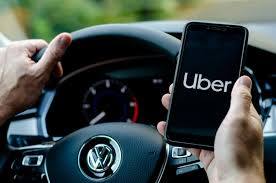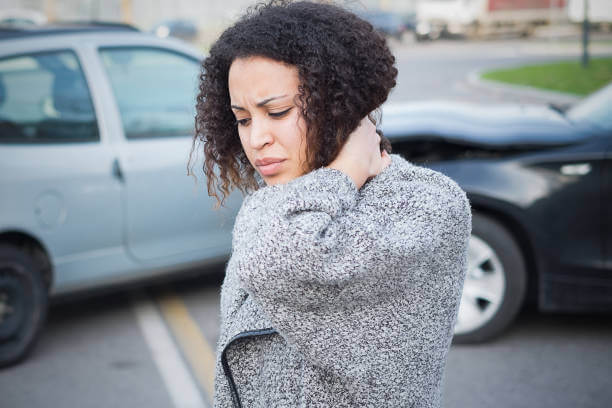Uber and Lyft Insurance – Considering driving and getting rideshare insurance for Uber or Lyft?
Uber and Lyft Insurance
Are you thinking about becoming an Uber or Lyft driver? While it may not be the top of the list, car insurance is something you should consider when making your decision to become a rideshare driver.
Before we delve into the complicated world of auto insurance for a rideshare driver, we want to be clear that at this time; we do not provide insurance coverage if you are an Uber or Lyft driver. While insurance companies recognize the need for rideshare coverage, many are only testing the waters, and availability varies by state and company.
It’s also important to understand that your personal auto insurance policy does not cover these activities and in the event of a claim, while signed into the app, there will be no coverage. The insurance company may also cancel your policy due to the tricky nature of when you are “online” or “offline.”
But don’t let it deter you from earning some extra money, Uber and Lyft do offer their drivers rideshare insurance under a commercial insurance policy. Please be sure to read the coverage under these policies, and that you fully understand how they protect you and the Uber insurance requirements.

Uber and Lyft Insurance Coverage
Your personal auto insurance may provide coverage to you as a driver if you are “offline” but it is important to discuss it with us if you are confused about the coverage.
The commercial coverage provided to you while driving for Uber or Lyft is separated into stages, or periods, throughout your trip. These stages include offline, available, en route, and on a trip. Uber and Lyft Insurance give different coverage amounts to their drivers based on the stage of their trip.
For Uber drivers when you are “Available” Liability amounts are 50k/100k/25k these limits represent Bodily injury/Total Per Accident/Property Damage
When “En route” Liability amounts are $1 million and Uninsured/Underinsured Motorist are $1 million.
During the “Trip” (meaning you have passengers) Uber offers a $50,000 Comprehensive/Collision Limit with a $1000 deductible.
For Lyft drivers when you are “Available” Liability amounts are 50k/100k/25k these limits represent Bodily injury/Total Per Accident/Property Damage
When “En route” Liability amounts are $1 million and Uninsured/Underinsured Motorist are $1 million.
During the “Trip” (meaning you have passengers) Lyft offers a $50,000 Comprehensive/Collision Limit with a $2500 deductible.
Uber and Lyft Insurance: What if I am in an accident?

If you are in an accident during your trip or on the way to a fare, Lyft and Uber will cover medical expenses and other damages up to $1 million, even if an uninsured or underinsured driver is involved. The $1 million limit is much more robust limit than most drivers carry, even taxi drivers in many major cities carry lower limits, this limit should cover most accidents.
You also have a bucket of money to draw from with the comprehensive and collision coverage given by the ridesharing companies, the caveat being you have identical coverage on your personal insurance. Keep in mind that the deductibles are high, and the coverage only applies while you’re carrying passengers.
If you the accident occurs while waiting for a fare, you’ll need to file a claim with your insurance provider unless your state law or ridesharing endorsement specifies otherwise. If the insurance company denies the claim or you’re not entirely paid back, rideshare insurance from Lyft and Uber will kick in. However, ridesharing companies’ limits in these situations are relatively low. If you have ridesharing coverage with your personal insurance company, it is designed to cover this gap.
Reporting the accident and filing the claim with Uber and Lyft Insurance
Call the police: Whether your accident is a result of ridesharing or not, your first step should be to call the authorities. Depending on the nature of the accident and the rules of your ridesharing company, you might have to show your personal proof of insurance or your company’s certificate. Just like in any other accident, exchange information with the other driver.
Filing the Claim: After the accident, you will need to file the claim with your insurer. Regardless if your ridesharing company will cover the damage, your personal insurer will want to know about any accidents. If you haven’t been honest with your insurer about your employment status, this can be a difficult situation. If you opt to not tell your insurer about the accident, you risk being dropped if the company finds out. Your ridesharing company will need to be notified as well even if it isn’t covering the claim. If your ridesharing company’s coverage is available to you, a rep can help you start the claims process.
Uber and Lyft Insurance Tips and Tricks
If you’re driving for Uber or Lyft, it’s crucial to understand the insurance coverage provided by the rideshare companies and how it interacts with your personal auto insurance policy. Here are some tips and tricks to ensure you’re adequately covered while driving for Uber or Lyft:
- Understand Rideshare Insurance Coverage: Both Uber and Lyft provide liability coverage while you’re driving passengers (from the time you accept a ride request until the ride ends). This coverage includes bodily injury and property damage liability. However, the coverage limits vary depending on whether you have a passenger in the car or are waiting for a ride request.
- Review Your Personal Auto Insurance Policy: Before driving for Uber or Lyft, review your personal auto insurance policy to understand what coverage it provides while using your vehicle for ridesharing purposes. Some personal auto insurance policies may exclude coverage for commercial activities like ridesharing. If your policy doesn’t cover ridesharing, consider purchasing rideshare insurance or a commercial insurance policy.
- Consider Gap Coverage: There may be gaps in coverage between your personal auto insurance policy and the coverage provided by Uber or Lyft. Gap coverage, also known as rideshare insurance, fills these gaps by providing coverage during periods when you’re logged into the rideshare app but don’t have a passenger in the car. It can help protect you from potential liabilities and uninsured losses.
- Know Your Deductibles: Both Uber and Lyft provide contingent collision and comprehensive coverage, but you’re responsible for a deductible if you need to make a claim. Familiarize yourself with the deductibles and consider whether you’re comfortable covering the cost out of pocket in the event of an accident.
- Drive Safely: Insurance claims and coverage issues can be complicated if you’re involved in an accident while driving for Uber or Lyft. To minimize risks and protect yourself and your passengers, prioritize safe driving practices, avoid distractions, and adhere to traffic laws and regulations.
- Keep Records: Maintain detailed records of your rideshare activities, including timestamps of when you’re logged into the app, trip durations, and mileage. This documentation can be valuable in case of disputes or insurance claims.
- Consider Additional Coverage: Depending on your individual circumstances and risk tolerance, you may want to explore additional insurance coverage options, such as umbrella insurance, to provide extra protection beyond the basic liability coverage offered by Uber and Lyft.
- Stay Informed: Rideshare companies regularly update their insurance policies and coverage details. Stay informed about any changes or updates to ensure you have the most up-to-date information regarding insurance coverage while driving for Uber or Lyft.
By understanding the insurance coverage provided by Uber and Lyft, reviewing your personal auto insurance policy, and considering additional coverage options, you can help protect yourself and your passengers while driving for rideshare companies.
What type of insurance do I need as an Uber or Lyft driver?
As an Uber or Lyft driver, you need a special type of car insurance known as ride-sharing insurance. This insurance bridges the gap between your personal car insurance policy and the coverage provided by the ride-sharing company.
Are Uber and Lyft drivers covered by the company’s insurance?
Uber and Lyft provide insurance for drivers that kicks in during the time a ride is accepted to the time the ride is completed. However, there may be gaps in coverage, so it’s important to have your own ride-sharing insurance policy.
How can I get more information on insurance for Uber and Lyft drivers?
For detailed information and to find the best coverage options as an Uber or Lyft driver, you can reach out to our team for personalized assistance. Call us at 1.888.445.2793 today.
Which insurance is best for Uber drivers?
The best insurance for Uber drivers typically includes ride-sharing insurance coverage. This specialized insurance ensures you have adequate protection while driving for Uber. To determine the best insurance options for your specific needs, contact our team of experts. We can provide personalized recommendations to ensure you have the right coverage.
Last Updated on by Marlon Moss

